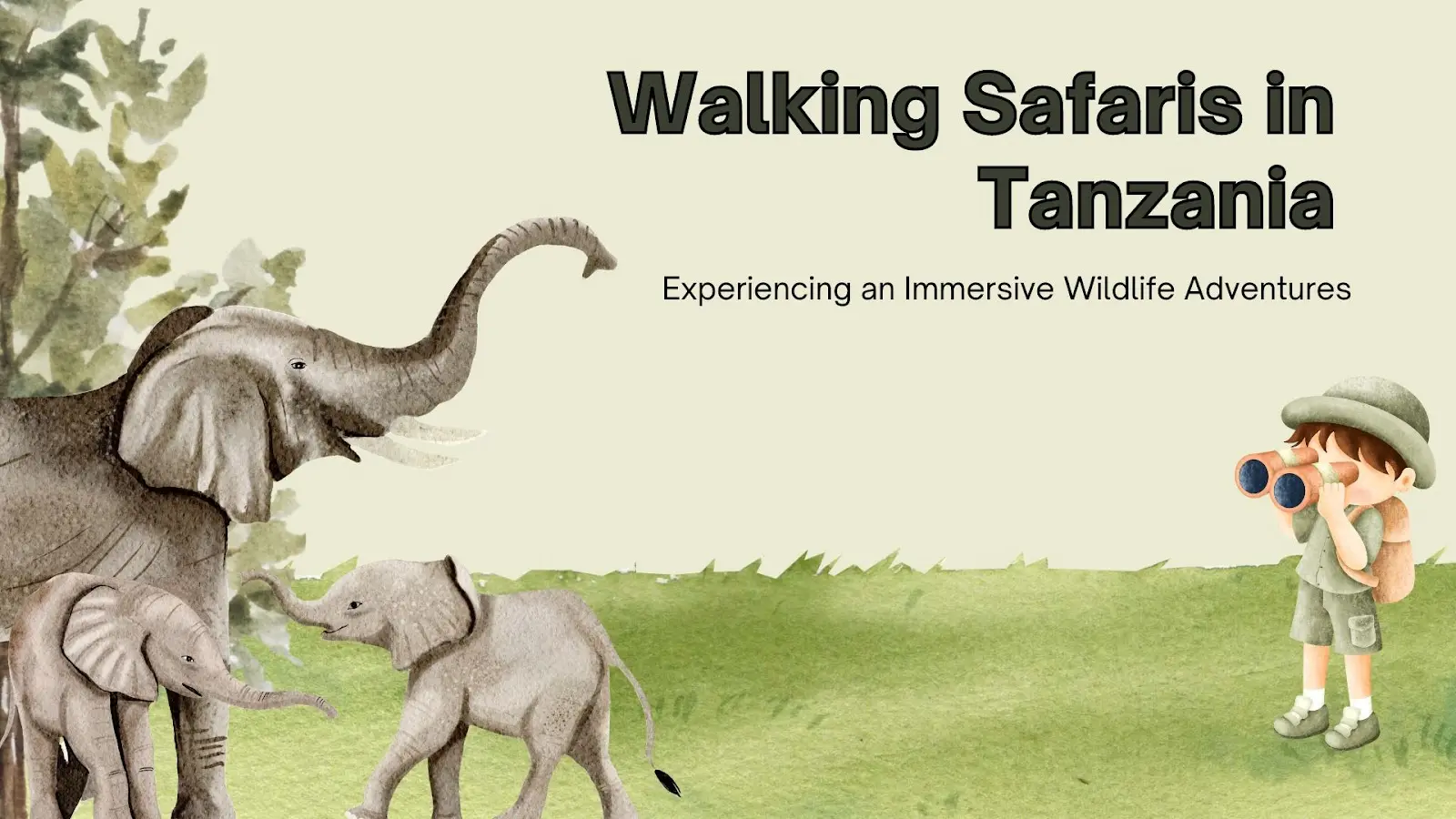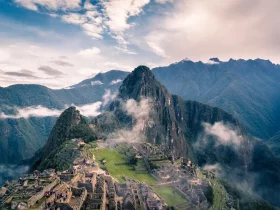Walking safaris in Tanzania offers a unique and thrilling way to experience the country’s incredible wildlife up close and on foot. Unlike traditional safaris, where animals are observed from the safety of a vehicle, walking safaris enable you to immerse yourself in the African bush and have intimate encounters with wildlife.
Led by expert guides, walking safaris provide the adventure of a lifetime. This article will highlight the top destinations, experiences, and tips to help prepare you for an unforgettable walking safari in Tanzania.
Top Destinations for Walking Safaris in Tanzania
Tanzania boasts several spectacular national parks and game reserves that serve as ideal locations for walking safaris. Here are some of the top destinations:
- Selous Game Reserve – Selous is one of the largest fauna reserves in the world, known for its remote and less-visited status, making it perfect for intimate walking safari experiences.The varied habitats allow many opportunities to spot wildlife along the Rufiji River.
- Serengeti National Park – Famous for the Great Migration, the Serengeti offers walking safaris during the dry season. Guides lead walks around hippo pools and acacia trees, allowing you to spot diverse wildlife nearby.
- Ruaha National Park – With giant baobab trees and riverine forests, Ruaha is a beautiful park for walking safaris. Elephants, kudu, sable antelope, and predators like lions and leopards can be observed on foot.
- Ngorongoro Area – Walking safaris can be arranged around the Ngorongoro Crater rim or in the grasslands, where you might spot elephants, buffalo, and hippos. The scenic views are spectacular.
- Tarangire National Park – It is ideal for walking safaris, especially bird-watching walks during the dry season. Its proximity to Arusha also makes it a good option for a family safari in Tanzania.
- Katavi National Park – Remote and wild, Katavi hosts walking safaris that provide the chance to get very close to hippos, crocodiles, and buffalo among other wildlife attracted to the lakes and wetlands.
Walking Safari Itineraries and Experiences
From short introductory walks to multi-day adventures, walking safaris offer varying ways to experience the African wilderness:
For families who want a small taste of a walking safari, half-day or full-day walks are perfect. Often available right from your family safari lodge in Tanzania, these short guided walks last just a few hours but provide an exciting glimpse into walking among African wildlife.
For more adventurous family walking journeys, consider fly-in walking safaris. These safaris involve flying deep into the Tanzanian wilderness via bush plane. Once there, you’ll explore the isolated landscape on foot, moving between a series of small wilderness camps over several days. This unique experience allows your family to traverse long distances and discover incredibly unspoiled areas that are only accessible on foot.
For the ultimate experience of a family safari in Tanzania, consider embarking on a walking journey from camp to camp. Guided by experts and assisted by porters to carry your family’s camping equipment and supplies, participants in mobile walking safaris spend full days exploring the bush together, covering distances of up to 15 kilometers per day.
Along the way, interactive cultural experiences provide the chance to visit Maasai villages and learn about indigenous lifestyles. Nights are spent camping out under the endless African sky.
Best Times for Walking Safaris in Tanzania
When planning a walking safari, it is important to know the best times specific to each park.
- Serengeti – During the dry season from June to October when the thicker bush is easier to navigate on foot.
- Selous – Year-round, but June to October is ideal for cooler and drier weather.
- Ruaha – The best time is during the dry season between June and October.
- Katavi – Game viewing peaks during the dry season between May and October.
- Tarangire – Walking safaris take place during the dry months of June to October.
- Ngorongoro – June to October, and also February for the calving season.
In general, the cooler, drier months between June and October are best for most parks. This ensures easier walking conditions and higher concentrations of wildlife around dwindling water sources.
Preparing for a Walking Safari: Tips and Essentials
Proper preparation is key to having a rewarding walking safari experience. Here are some tips:
- Pack lightweight, neutral-colored clothing that blends into nature. Avoid bright colors.
- Wear sturdy, broken-in hiking boots or shoes to support you on rough terrain. They should cover your ankles.
- Bring sun protection like hats, glasses, and sunscreen, even during cooler months.
- Pack insect repellent to prevent mosquito bites that could spoil your trip.
- Bring any needed medications, bandages, or antiseptic for minor first-aid purposes.
- Pack ample drinking water to stay very hydrated while walking under the sun.
- Carry a day-pack to hold your essentials while keeping your hands free.
Your guide will carry a medical kit, radio, firearm, and other safety equipment in case of emergencies. Follow all of your guide’s instructions for a safe trip.
Combining Walking Safaris with Game Drives
While walking safaris provide unique and thrilling close encounters with wildlife, they are limited in the area they can cover and require moving slowly on foot. To experience Tanzania’s vast wilderness and abundant animals more fully, it is best to combine guided walking safaris with traditional game drives in vehicles.
Participating in both walking adventures and game drives enables you to enjoy the most fulfilling and diverse safari experience that Tanzania has to offer. Game drives enable covering more ground to see abundant wildlife while walking safaris provide intimate encounters. This combination works well for a family safari in Tanzania.
Walking safaris deliver intimate wildlife experiences that quicken your heartbeat and immerse you in nature in a way that’s not possible from a vehicle. By participating in both walking adventures and game drives, you can obtain the most fulfilling and varied safari experience Tanzania has to offer.
Conclusion
Whether you choose short day walks or multi-day treks, walking safaris provide a safari experience in an exciting and unique way. The excitement of bush walks can be appealing to adventurous families looking for an immersive safari experience in Tanzania.
Combining this intimate adventure with game drives showcases Tanzania’s habitats, ecosystems, and animals more fully. Whether you opt for short day walks or multi-day treks, walking safaris fulfill the safari experience in an exciting new way.
FAQs
How do walking safaris differ from vehicle safaris?
Walking safaris provide more direct sensory and emotional connections with wildlife by experiencing habitats firsthand sans disturbances. They awaken ancestral spirits through intimate encounters.
Are walking safaris safe given the presence of wild animals?
Yes. Licensed guides carry radios and rifles in case of emergencies but rarely need them. Walks follow paths habituated to what wildlife is accustomed to, and groups move quietly and downwind to avoid startling animals. Safety remains the top priority.
Can families with children do walking safaris?
Walking safaris typically have age minimums of around 12 years or older. Teenagers can join special family departures allowing kids to unplug and engage with nature. Families with younger children can arrange short day walks starting from their lodge.









Hello!! My name is Annabella
I love to eat, travel, and eat some more! I am married to the man of my dreams and have a beautiful little girl whose smiles can brighten anyone’s day!